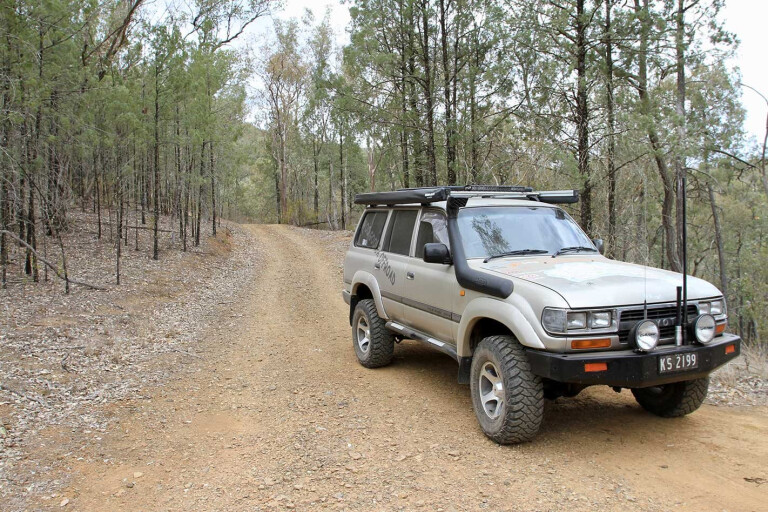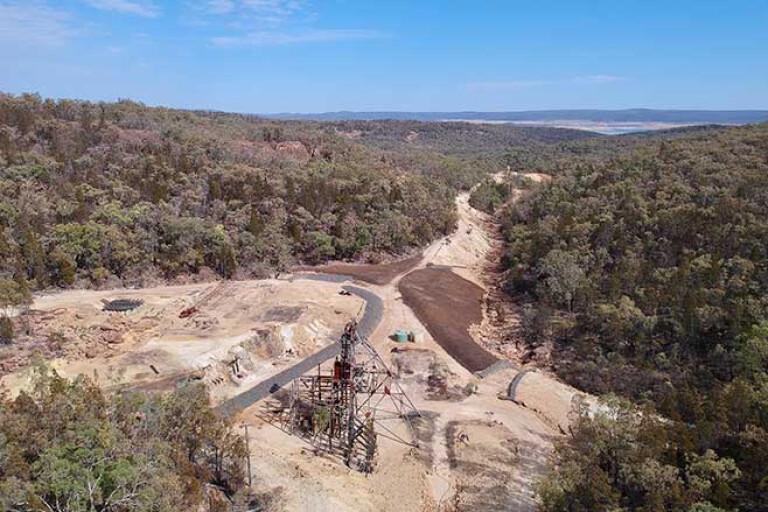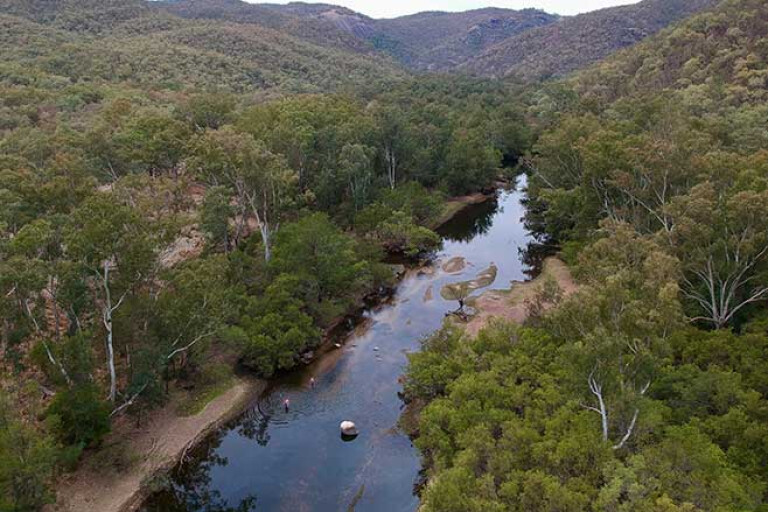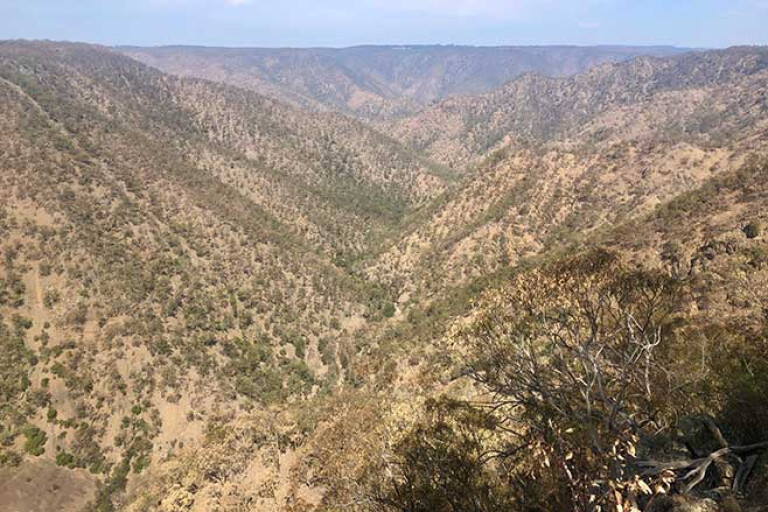
BACK in 1827, Allan Cunningham came through the Gwydir River area of northern NSW and camped beside the river with his entourage as they headed north looking for new pastoral land. Over the next few years more people followed and Bingara was subsequently founded in 1840.
As with most new settlements, locals started searching the outlying areas and gold was found a few years later along with other gems like rubies, garnets and a few diamonds.
Not long after, the word got out about another new goldfield and the town’s population grew, shops and pubs were built along with a police station, post office, flour mill and more. The gold and diamonds ran out by around 1950 and the miners, their families and shopkeepers moved on. At the time, the Bingara diamond field was Australia’s largest and most profitable, with the largest diamond found in the region being 37,000 carats.
These days it’s a quiet, slow town where travellers are welcomed and the locals friendly with advice and big hearts. On our arrival we headed straight to the local tourist info centre for some recommendations on where to stay and what to do. The local council has set aside areas in the heart of town where you can free camp beside the Gwydir River and farther east towards the massive Copeton Dam.

Being an ex-mining town, Bingara has set aside areas where you can freely fossick for gems, and the info centre has a map of where you can go. One of the biggest gold mines in Bingara (and the last to close just before 1950) was the All Nations, and only minutes from town in Hill Street you can get up close to its massive 10-head stamper.
Fully intact, you’ll be blown away with the size of this thing, but just for a minute stop and think about the logistics in getting this monster out here from England.
One of the best places to get an overall view of Bingara is from the HF Batterham Memorial Lookout on the eastern side of town. The narrow road leads you up several hundred metres to some of the best views of the area. You can make it a day out up here as there are toilets, barbecues and one of the area’s many bird-walking trails. These days, the town has an art deco feel due to the fully functional Roxy Theatre which was built back in the 1930s.
Bingara sits in a valley surrounded by several ranges and nearby Mount Kaputar (an old volcano active 20 million years ago), so weather conditions vary immensely from winter to summer. Frost is a common occurrence during winter, but that’s the best time to throw another log on the fire and enjoy the clear winter skies. Summertime is often hot and dry with four-million flies being a pain, so come prepared or just spend time in the nearby pool or the Gwydir River for cooling down.

COPETON DAM
FARTHER east, towards Copeton Dam are areas that can only be explored by 4WD. Copeton has free camping and some of the biggest cod in the state.
At the turn of the century, before the dam was a thought, there were massive mines in the area, including several arsenic and tin deposits. One of the more notable ones was the Conrad arsenic mine that has now been decommissioned and where rehabilitation works have taken place.
It’s pretty darn amazing to be able to wander around this area, gazing at the incredibly massive and solid timber structures that once lowered the workers deep into the mine in steel crates. Around the mine are relics left behind that include structures, boilers, concrete foundations and more.

Along the main mine road towards Copeton Dam, keep a lookout for the tunnel in the rock where the explosives were kept behind a thick steel and timber door maintaining them at a steady and cool temperature. There’s a series of tall, solid rock structures that ran cable carts away from the mine to dispose of the waste rock; and around the hills you can see other mines and tunnels, some with narrow trolley rail lines coming out of them.
Some of the better and more remote camping can be found nearby at the Gwydir River State Conservation Area. It has been broken into several sections but one of our favourites is the Salmon section below Copeton Dam. Entry is via the Inverell to Copeton Dam road through a nature corridor where sheep properties line either side.
Not a hard road into the area (allow an hour to travel the 20km) and best for most 4WDs with proper low range, but recommendations advise not to tow any kind of trailer down into the gorge.

The gorge road winds its way down pretty steeply towards the bottom, with plenty of switchbacks and narrow sections. Along the way take a break at the Boulders lookout where the views across the valley towards other tors and mountains are some of the best in the region. But just keep in mind there is absolutely no mobile reception out here, so safety first and stay back from the edges.
The terrain is steep and holds nearly no flora content apart from the cyprus pines that like the sandy soil in amongst the granite rocks. It’s not until you get down to the bottom of the gorge where the land flattens out a bit and you’ll see more native grasses and gums.
This area is also the home to several types of deer (although we saw none), feral pigs and ’roos. Right at the end of the track where it merges with the Gwydir River, the camping spots are to die for with water views and lots of flat areas for a swag or tent.

The river has a sandy base and the water is filtered to the max, crystal clear and perfect to soak in on those hot summer days. Along the river are loads of bottlebrush and other native flowering trees, the birdlife soaking up the area with plentiful insects and water.
Back in the day this place must have been popular as pit toilets were installed, but these days they are full of rubbish and are seriously leaning over about to collapse – to us it looked like there had been no maintenance done on these structures for years.
The Gwydir River rises west, on the cusp of NSW’s New England Tablelands, and the summers get extremely hot and the winters down to below zero, so the best time to head here would be either spring or autumn with cooler nights and warm days.

Throughout the region are plenty of huge granite boulders that over millions of years have been slowly breaking down due to wind and rain, depositing a sandy covering across the landscape. During periods of heavy rain these little ball-bearing-like grains of sand become pretty slippery and it is advisable to take care exploring if there’s a storm about.
There are no other 4WD tracks down in the gorge, making it a great place to unwind and enjoy the river in its natural beauty.
The Gwydir River region may not be as popular as other higher profile local destinations, but if you’re after something more out of the way and need to switch off, this spot will tick your boxes. It’s all about the history, hidden camping areas and relics that line this great area.

COMMENTS